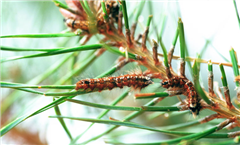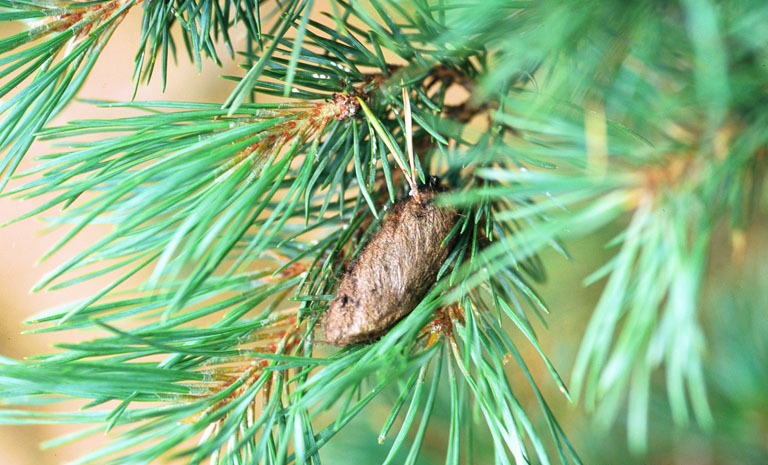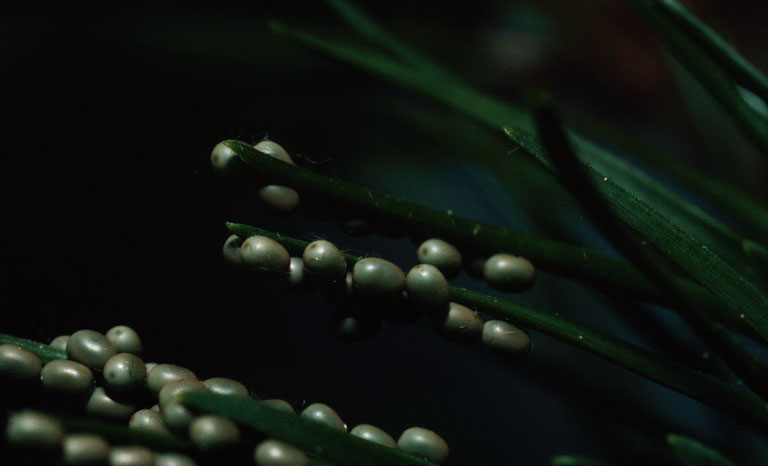Common Name
Pine Moth or Pine Lappet Moth
Latin Name
Dendrolimus pini
Main Host(s): Scots Pine (Pinus sylvestris), occasionally other conifers such as Fir (Abies), Spruce (Picea) and Larch (Larix).
Life Cycle
The Pine Moth generally produces one generation a year, although some individuals can require two years to complete development. After overwintering in the litter on the forest floor, the young larvae move into the forest canopy in the early spring (March-April) and resume feeding on the foliage. The larvae molt several times in June-July, and then pupate in bark crevices, or on needles and branches.

A month later, the adult moths emerge and begin their evening mating flights. The female lays approximately 200 eggs, in groups of 20 to 100 eggs, on twigs, needles and the bark of host trees. Less than a month later, the eggs hatch from the spindle-shaped pupae and the young larvae start to migrate and feed. Pine Moth larvae are covered with long bristles and are easily dispersed by the wind to colonize new host trees. The larvae first feed on their egg shell then move onto needles until mid-late autumn (October-November), when they move to the ground to overwinter in the litter as mid-instar larvae.

Impact & Damage
The Pine Moth is a native European insect that feeds mostly upon Scots Pine but it can defoliate other Pine species as well as conifers (Larch, Fir, and Spruce). It is found throughout Europe, ranging from Western Asia and south to North Africa where it may be found at higher elevations.
In Poland, the Pine Moth has proven to be a significant defoliator of Scot Pine and it is a periodic but significant defoliator in Germany and some of the other northern European countries.
Extensive defoliation can cause significant impact on individual tree and forest health. As with many defoliators, even one year of defoliation can cause a reduction in growth and yield. Several years of defoliation can cause significant tree and stand mortality.The genus Dendrolimus counts around 30 species that can cause serious damage to conifer trees. One of the most common in this genus is Dendrolimus sibirius, the Siberian Moth, which is a widespread pest on the Asian continent. It is similar to D. pini, except that it usually requires two years to complete its life cycle. Similarly, the Siberian Moth can also severely damage large area of coniferous forests.

Resources
Learn more about Dendrolimus
Quick Links
Contact a Valent BioSciences public health representative.
Contact Us